I’d swap my Garmin Forerunner 965 for this much cheaper smartwatch in a heartbeat — if it weren’t for one thing
Sunday Runday

In this weekly column, Android Central Fitness Editor Michael Hicks talks about the world of wearables, apps, and fitness tech related to running and health, in his quest to get faster and more fit.
For the past year, the Garmin Forerunner 965 has been my go-to running watch; I’ll wear a second watch for reviews, but no other option has supplanted it. This month, the Forerunner 165 came very close despite costing $350 less.
Technically, I’m using the Forerunner 165 Music ($300 less), but I don’t actually use the music storage. What matters is that this relatively cheap Garmin watch has the tools, UI, and accuracy I’d expect from a more expensive model like the Forerunner 965.
Even though the Forerunner 165 has plenty of noticeable compromises to hit that lower price point, I can live with 90% of them — and I love how much lighter the 165 is than the 965.
But there’s one missing Garmin Forerunner 165 feature from the Forerunner 265 or 965 that’s really hard to pass up, no matter what kind of runner you are. And it’s frustrating because it’s something Garmin could easily offer with the 165’s current technology.
Why I love the Forerunner 165
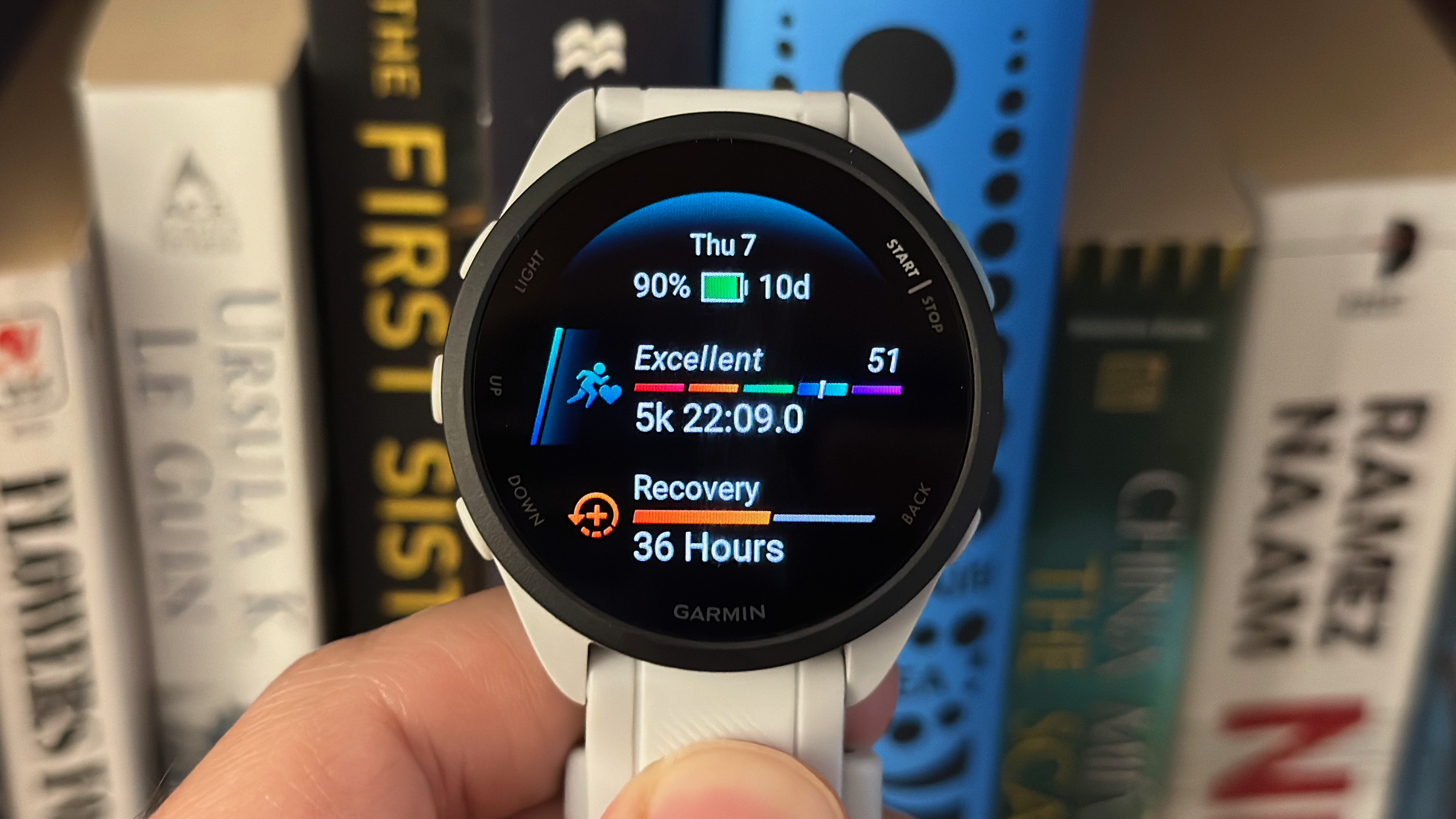
The Forerunner 165 may not be as cheap as the original Forerunner 55 it replaced, but I think most runners won’t mind the price creep in exchange for all the new perks it offers, like the more-readable AMOLED touch display, improved Elevate v4 heart rate sensor, and multi-GNSS tracking.
My recent Forerunner 165 fitness test proved that the watch delivers accurate results for steps, heart rate, GPS, and elevation gain compared to other cheap trackers, in ways the more pedestrian Forerunner 55 couldn’t.
It gave me confidence that I don’t necessarily need the more expensive Forerunners’ dual-band GPS, because the Forerunner 165’s all-systems GNSS mode does quite well.
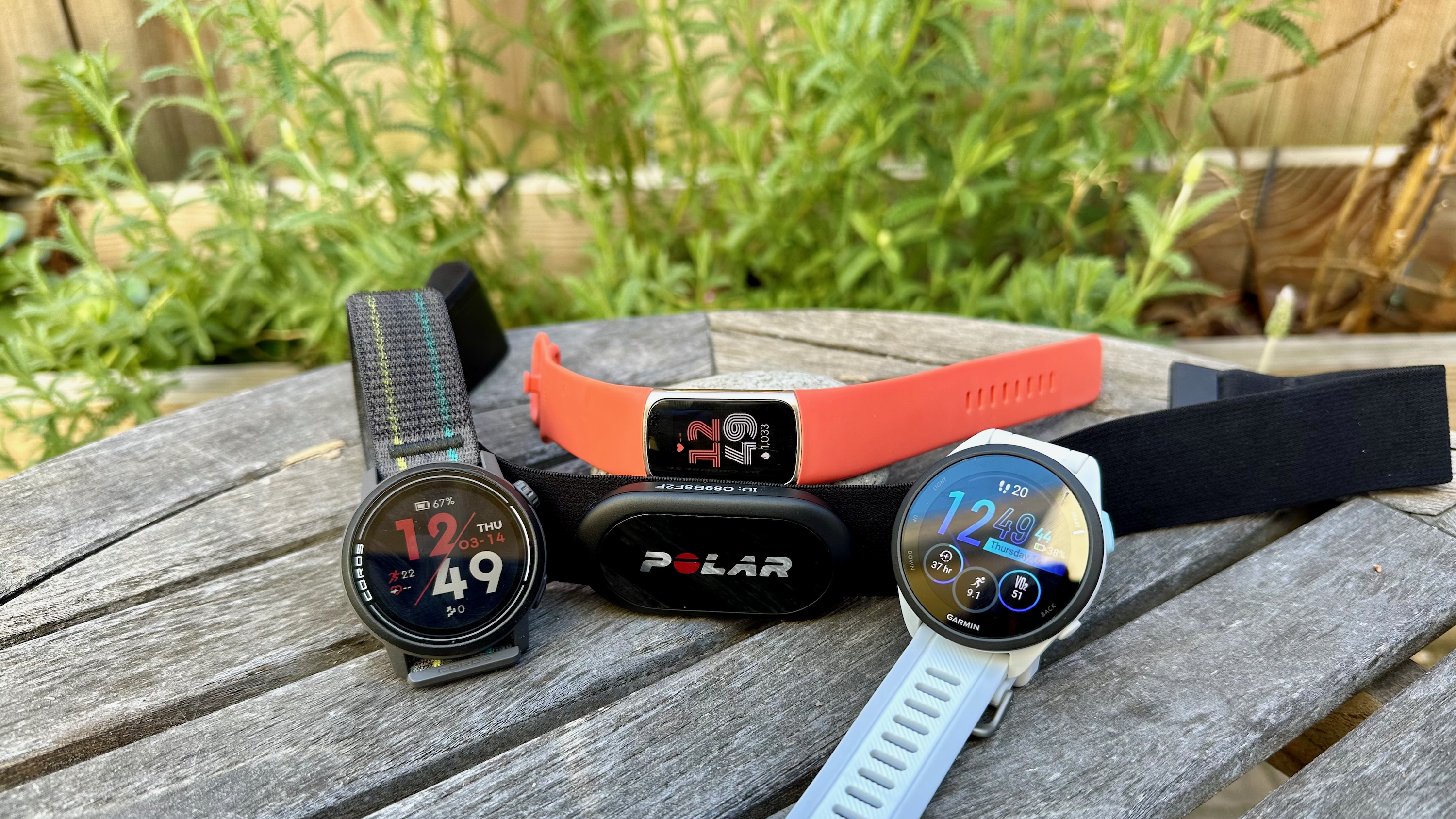
In my test, it beat out the COROS PACE 3, my other favorite cheap running watch with dual-band tracking, and the Fitbit Charge 6, our favorite fitness tracker. While COROS’ watch lasts twice as long with its MIP display, runners who need more than the Forerunner 165’s 11 days or 19 GPS hours probably won’t buy a $250 watch. Instead, they’ll prefer not having to strain their eyes to read notifications.
Like the PACE 3, though, the Forerunner 165 is satisfyingly light and skinny. At 39g/ 1.38oz, it’s noticeably more comfortable than the 53g/1.87oz Forerunner 965. I get used to the 965 during runs, but I can’t ignore its presence on my wrist like I can with the Forerunner 165 — especially during sleep tracking.
So long as the Forerunner 165 gives me my post-run Training Effect data and daily suggested workouts, I can stay on track with what I’ve already been doing with my Forerunner 965.
The Forerunner 165’s compromises I can live with
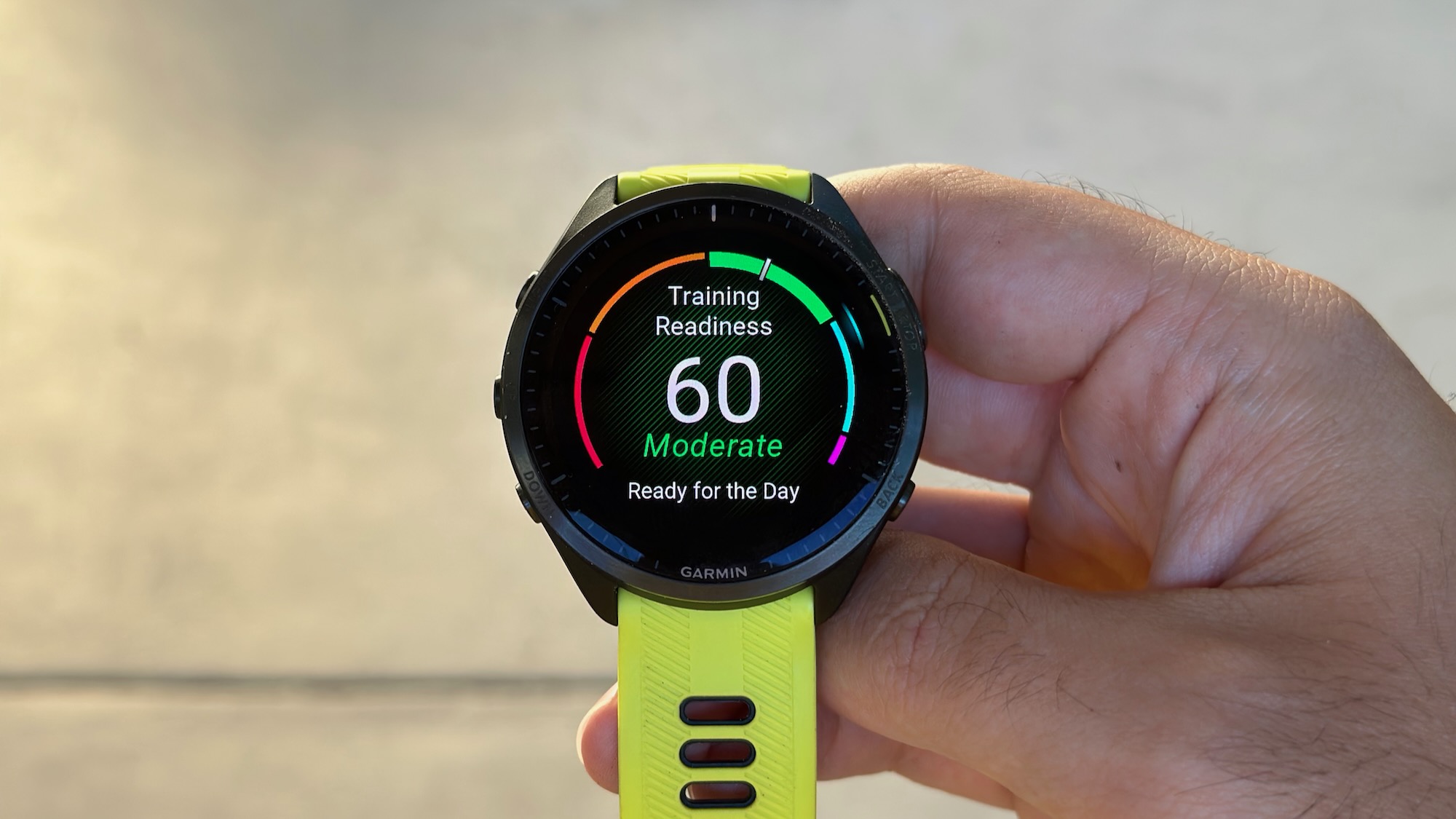
To make the $600 Forerunner 965 or $450 Forerunner 265 more tempting, Garmin restricts a bunch of data from the Forerunner 165. Thankfully, I’d call most of Garmin’s metrics desirable but not “essential.”
I can’t deny that the Forerunner 965 helps me track my progress as a runner. I can see my VO2 Max graph over the past four weeks, plus scores on how my fitness translates into Endurance and Hill strength over time. But I also think these appeal to me out of data-driven vanity, a way to validate that my training is working.
If you really need confirmation, the Forerunner 165 shows your current VO2 Max and a 4-week graph of your predicted race times; if the projections go lower, you know Garmin thinks you’re getting faster. Otherwise, so long as you’re keeping pace with what Garmin Coach or your daily suggested workouts tell you, you can typically count on improving over time.
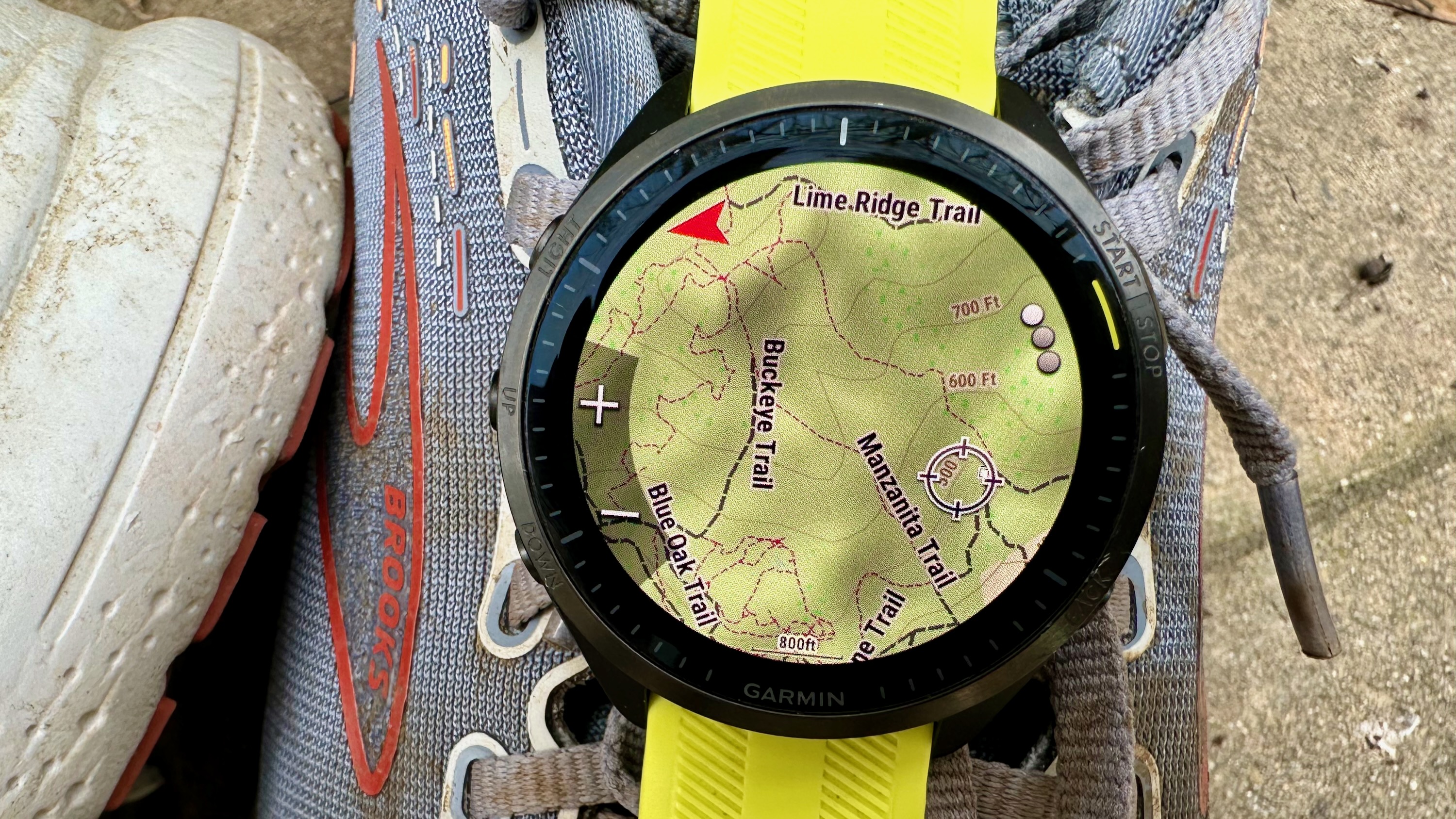
Every other useful Garmin metric — Training Status, Training Readiness, real-time stamina, or performance condition — is mostly useful for beginner or intermediate runners who don’t know enough to trust their own instincts. They quantify your body’s aches, your wheezing lungs, or that spring in your step.
So long as I have Garmin’s daily suggested workouts as a benchmark for whether to train harder or pull back that day, that’s typically all I need to reinforce whether I’m overreaching, peaking, or slacking off. Everything else comes from experience.
Out of all the nice-to-have features the Forerunner 965 offers, pre-downloaded topographical maps are the hardest to lose, as a nice backup if you go hiking in unfamiliar territory. But if I’m honest with myself, I don’t go hiking all that much and use Alltrails when I do so I can cope with the loss.
Garmin is blocking the Forerunner 165 from offering its most useful metric
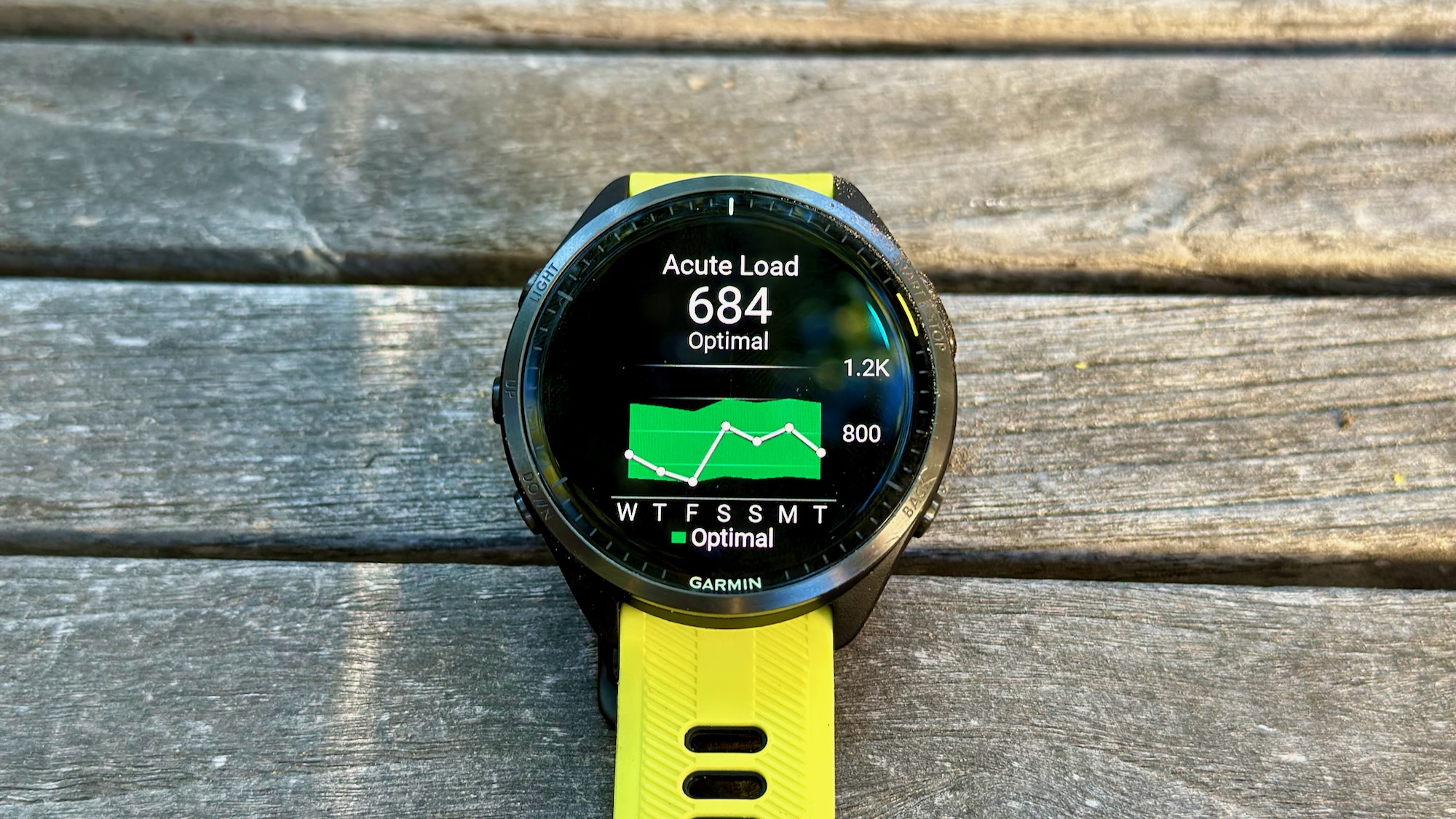
Beyond all Garmin’s optional perks, there’s one data tool the Forerunner 165 lacks that I can’t do without as a runner: Training Load. And I’m pretty darn sure it could deliver that data… if Garmin lets it.
Without getting overly technical, Training Load measures how hard your body worked out on a given day based on your heart rate and oxygen consumption. You want to hit a certain Training Load every week and then slowly increase your load number every week, either by running more or running faster.
Your Load is split into three heart rate zone categories: Low aerobic, high aerobic, and anaerobic. Higher heart rates give you more training load in shorter intervals, but high-load runs also take longer to recover from. A low aerobic run is easier and causes less “load” on your body but slowly helps you improve your fitness over time.
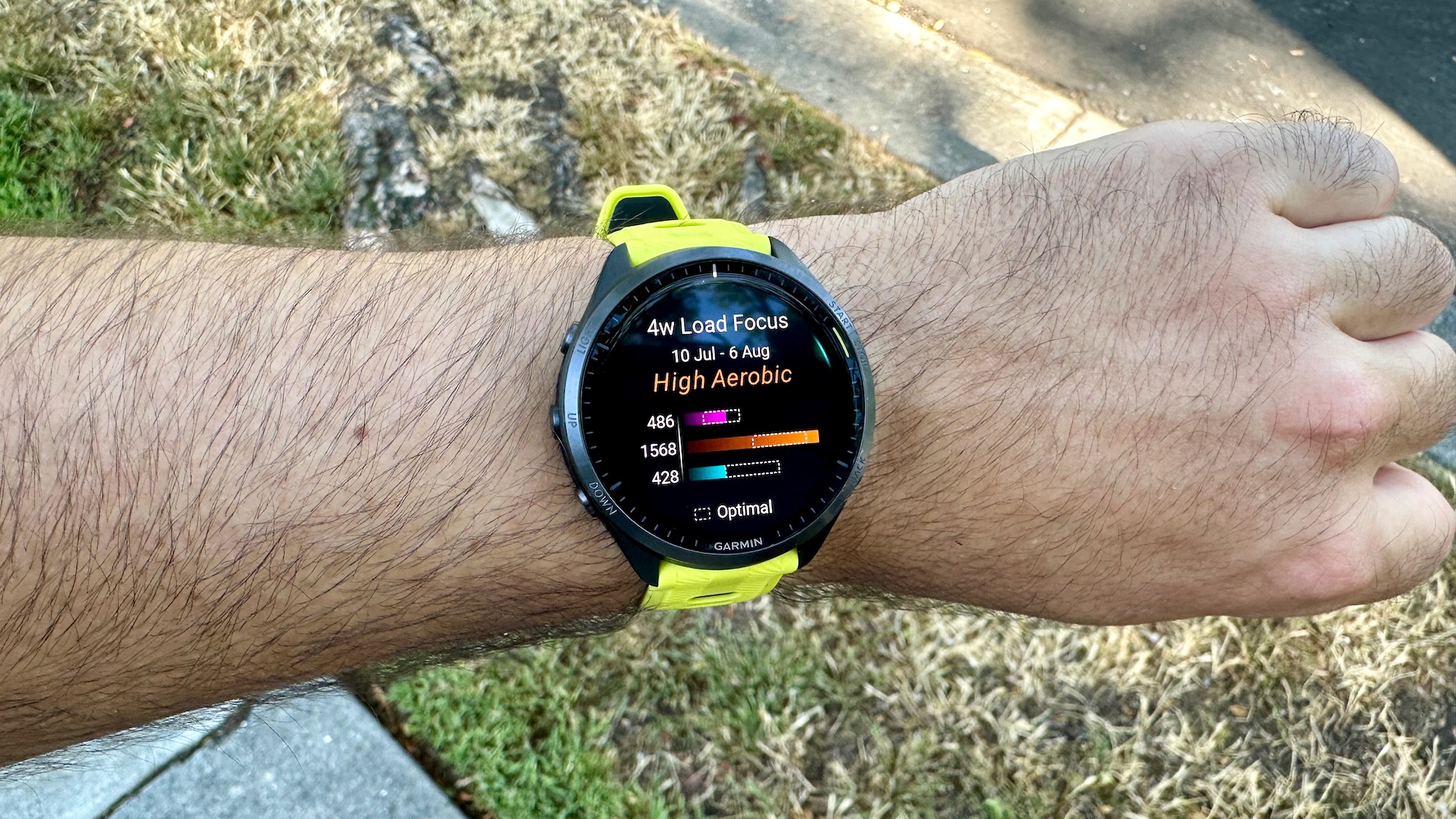
It all sounds very data-driven, but it’s basically all about balance. Garmin helps me remember if I’ve done enough sprints, intervals, or slow jogs recently, without having to study my past workouts. And more generally, it tells me if I’m keeping pace with past versions of myself or if I’m over- or undertraining.

Unfortunately, Training Load isn’t available on the Forerunner 165…or is it? Because buried in Garmin Connect app submenus, I found my Training Load data, up to the current date! And I’ve only used the Forerunner 165 in the past week.
According to a Garmin rep, though, this Acute Load data is only available because I already have a Forerunner 965 associated with my account. “If you only had a 165 in your account, you would not see the load features at all,” she explained. In other words, it’s an arbitrary paywall rather than an actual 165 CPU limitation.
I also suspect that the Forerunner 165 could show my Training Load Focus for aerobic or anaerobic runs, if Garmin wanted. Why? Because just like the Forerunner 965, the Forerunner 165 takes “the user’s training history” and “intensity” into account when suggesting a daily workout, according to my Garmin rep.
That includes “if there is a shortage in one area (e.g., base to build up base endurance, threshold to increase high aerobic training),” she continued.
So, with the Forerunner 165, you can look at the daily workout suggestions and guess what Garmin thinks about your current training load focus behind the scenes. You just won’t have any way of checking the raw data for yourself.
My full Garmin Forerunner 165 review will come out soon, but I already think it’s one of the best Garmin watches available. If I didn’t already have both it and the Forerunner 965 in hand, I think I would happily accept the compromises of the cheaper model to save more than half off the price.
I just wish Garmin hadn’t decided to make Training Load a feature you have to pay an extra $200 to get — or $100 more with the Forerunner 255 — because to me, it’s pretty darn essential.
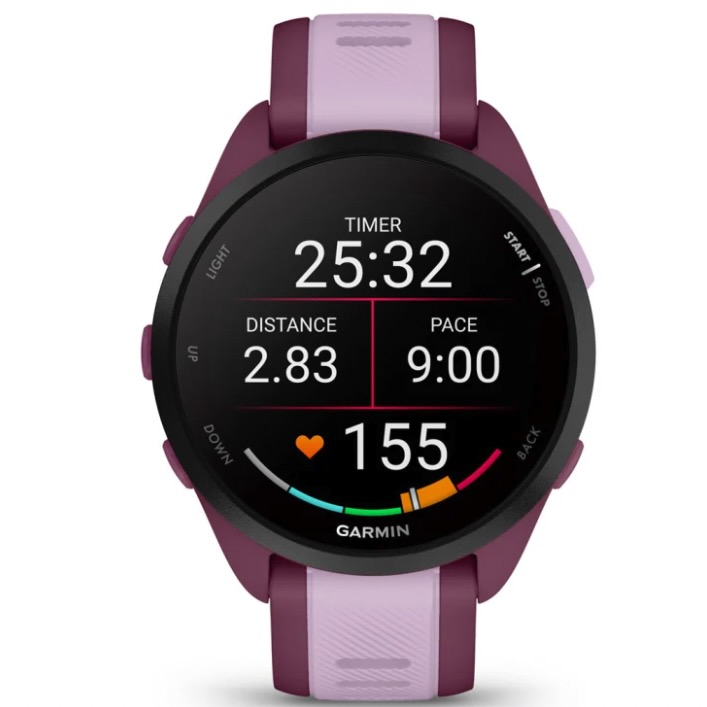
Almost everything you’d want
The Garmin Forerunner 165 arrives three years after the Forerunner 55 with a brand new heart rate sensor with HRV status, much more accurate GPS and elevation data, breadcrumb navigation, and an AMOLED touch display. It has new software tricks, too — just not the Training Load feature that we really want.